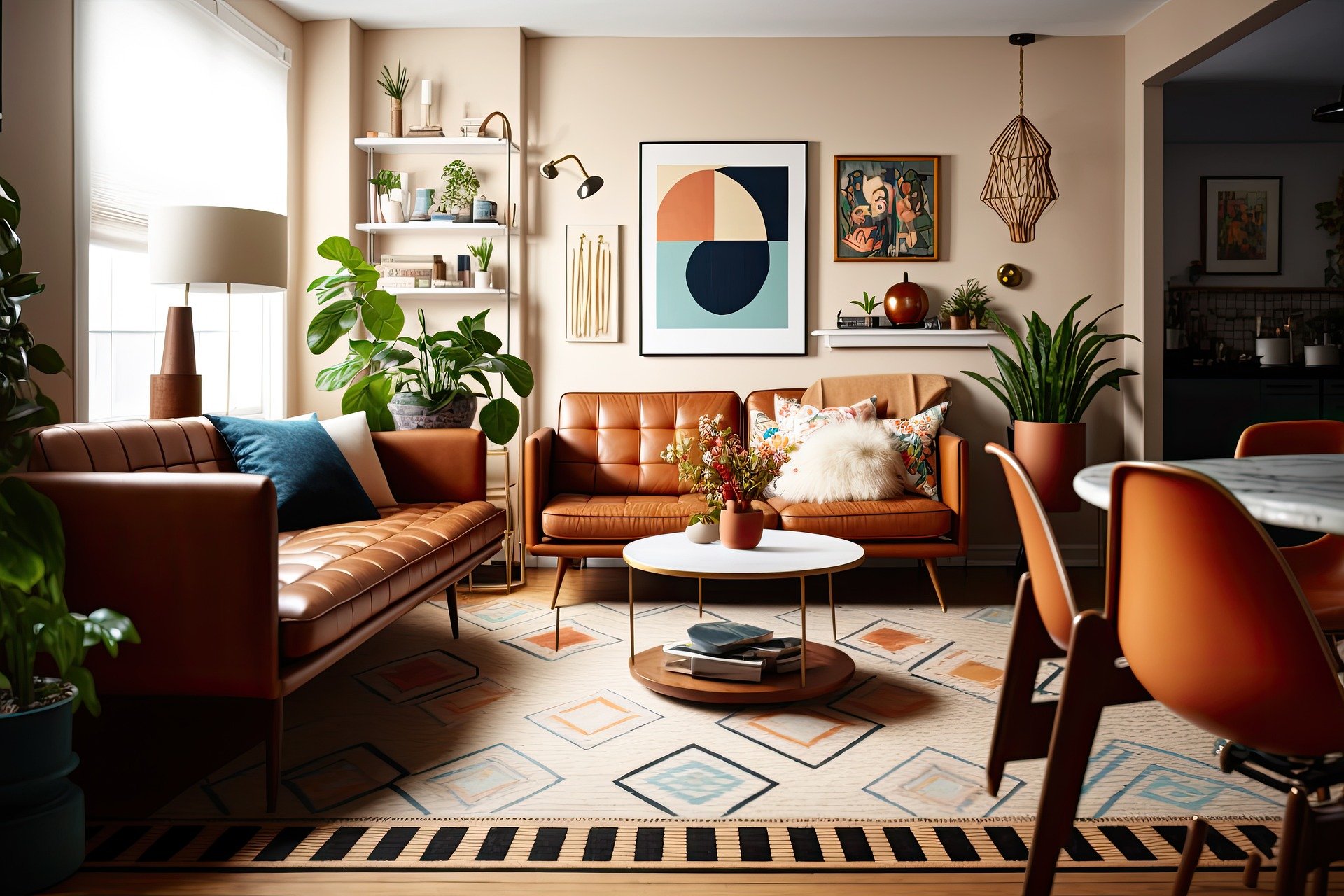Wabi-Sabi Styling: Embracing Imperfection in Home Design
In the ever-evolving world of interior design, a captivating philosophy from Japan is quietly reshaping how we perceive beauty in our homes. Wabi-sabi, an ancient aesthetic principle celebrating imperfection and transience, is finding its way into modern interiors, offering a refreshing counterpoint to the polished perfection often sought in contemporary design. This article delves into the art of wabi-sabi styling, exploring how this timeless concept is revolutionizing the way we create and appreciate our living spaces.

The Roots of Wabi-Sabi
Wabi-sabi’s origins can be traced back to 15th century Japan, emerging as a reaction to the prevailing aesthetic of ornate, perfect, and luxurious design. The term combines two concepts: ‘wabi,’ which refers to the beauty of humble simplicity, and ‘sabi,’ which embraces the passage of time and wear. Initially associated with the Japanese tea ceremony, wabi-sabi gradually permeated various aspects of Japanese culture, including architecture, interior design, and art.
In its essence, wabi-sabi celebrates three simple realities: nothing lasts, nothing is finished, and nothing is perfect. This worldview encourages an appreciation for the impermanent and incomplete nature of all things, finding beauty in the modest and unconventional. As a design philosophy, it stands in stark contrast to Western ideals of symmetry, permanence, and flawlessness.
Principles of Wabi-Sabi in Home Design
Incorporating wabi-sabi into home design involves more than just adding a few rustic elements. It’s a holistic approach that affects everything from material choices to overall atmosphere. Key principles include:
-
Embracing natural materials: Wabi-sabi favors organic materials like wood, stone, and clay, appreciating their inherent textures and imperfections.
-
Celebrating wear and patina: Instead of hiding signs of age, wabi-sabi design highlights them, seeing beauty in weathered surfaces and worn edges.
-
Simplicity and minimalism: Clutter is antithetical to wabi-sabi. The philosophy encourages paring down to essentials, creating space for contemplation and appreciation.
-
Asymmetry and irregularity: Perfect symmetry is avoided in favor of more natural, organic arrangements that feel less contrived.
-
Connection to nature: Wabi-sabi design often incorporates elements that change with the seasons, like plants or objects that weather naturally.
Implementing Wabi-Sabi in Your Home
Bringing wabi-sabi into your living space doesn’t require a complete overhaul. Start with small changes that gradually shift your home’s aesthetic and atmosphere:
-
Choose handmade over mass-produced: Opt for artisanal ceramics, handwoven textiles, and other items that show the maker’s hand.
-
Incorporate natural elements: Bring in plants, driftwood, or stones to connect your space with nature.
-
Embrace imperfection: Instead of discarding slightly damaged items, consider how they might add character to your space.
-
Use a muted color palette: Wabi-sabi typically favors earthy, subdued tones that evoke a sense of calm and connection to nature.
-
Create negative space: Allow for areas of emptiness in your home, giving each object room to breathe and be appreciated.
The Psychological Benefits of Wabi-Sabi Interiors
Beyond aesthetics, wabi-sabi styling can have profound effects on our well-being. In a world that often demands perfection, a wabi-sabi home offers a sanctuary of acceptance and mindfulness. Research suggests that living in spaces that embrace imperfection can reduce stress, increase contentment, and foster a greater appreciation for the present moment.
Moreover, wabi-sabi interiors encourage a different relationship with our possessions. By valuing items that age gracefully and develop character over time, we’re less likely to participate in the cycle of constant consumption and disposal. This shift not only benefits our mental health but also aligns with growing concerns about sustainability and mindful living.
Wabi-Sabi in the Modern Context
While rooted in centuries-old philosophy, wabi-sabi is remarkably relevant to contemporary design challenges. As more people seek alternatives to the sleek, technology-driven aesthetics that have dominated recent years, wabi-sabi offers a way to create homes that feel both timeless and deeply personal.
Designers are finding innovative ways to blend wabi-sabi principles with modern needs. For instance, the use of reclaimed materials in contemporary architecture or the integration of smart home technology in ways that don’t disrupt the overall sense of simplicity and naturalness. This fusion of old and new, imperfect and functional, is creating spaces that are uniquely suited to our complex modern lives.
Challenges and Considerations
Adopting wabi-sabi styling isn’t without its challenges. In a culture that often equates newness with value, it can be difficult to shift perspectives and truly appreciate the beauty in imperfection. Additionally, there’s a fine line between thoughtful wabi-sabi design and spaces that simply look neglected or unfinished.
The key lies in intentionality. Each element in a wabi-sabi inspired home should be chosen with care, its imperfections celebrated rather than tolerated. It’s about creating a curated space that tells a story – your story – through objects that have meaning and character.
As we continue to navigate an increasingly digital and fast-paced world, the principles of wabi-sabi offer a compelling alternative. By embracing imperfection in our homes, we open ourselves to a new way of seeing beauty – not just in our living spaces, but in life itself. The wabi-sabi home becomes more than just a place to live; it’s a reflection of a philosophy that values authenticity, mindfulness, and the profound beauty of impermanence.





